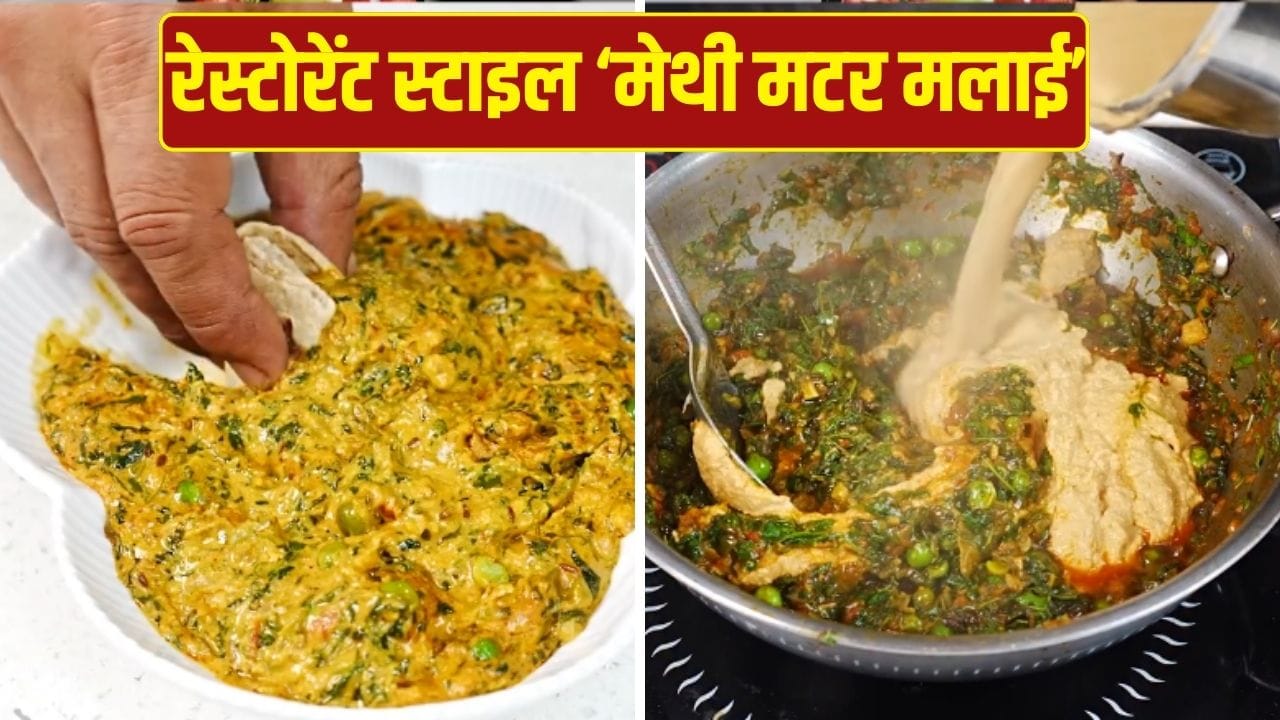Fenugreek Pea Cream
In winter, both green vegetables like fenugreek and peas taste amazing and if their combination is made then you not only get excellent taste but also get a lot of nutrients. Fenugreek pea malai is a very popular winter dish in Indian homes. The creamy textured vegetable can be served with roti, paratha, naan and jeera rice. It can also be served on special occasions like the arrival of guests, but sometimes if you have to prepare this vegetable suddenly then there is no cream or malai. Despite this, you can still make methi matar malai sabzi with creamy texture. Follow the recipe given here.
When methi matar malai is made by mixing fresh green peas and fresh fenugreek leaves, its aroma goes far. This is why you start feeling like eating food. In this article, let us know the recipe of restaurant-style Methi Matar Malai which can be easily made at home without cream.
What are the ingredients required?
For Methi Matar Malai, you will need 250 grams fenugreek, 2 to 3 onions, 5 to 6 green chillies, 2 inches ginger, 10 to 15 cloves of garlic, 2 tablespoons peanuts, 2 dry red chillies, 1 teaspoon gram dal, 2-3 tomatoes, 1 teaspoon whole coriander, 1 teaspoon sesame seeds, half teaspoon black pepper, 2 to 3 tablespoons oil, 1 small spoon cumin, half cup green peas, half teaspoon turmeric powder, 1 teaspoon red chili powder.
Fenugreek Pea Malai Recipe
- First of all, clean the fenugreek and wash it thoroughly with two to three times water and then chop it finely.
- Now heat a pan. Add peanuts to it and roast it while stirring on low flame. This will take one and a half to two minutes.
- Now put gram dal, dry red chilli, whole coriander, white sesame and black pepper in the same pan and fry them together.
- After all the roasted spices along with the peanuts cool down slightly, blend everything together. Add a little water to it so that a smooth paste is formed.
- Now heat oil in a pan and then splutter cumin seeds in it. After this add finely chopped garlic to it. Fry it until it turns slightly golden.
- After this, add finely chopped or grated ginger and green chillies in the pan and fry for some time, but do not fry it too much.
- After green chillies and ginger, add finely chopped onion and cook till it becomes soft. After this add green peas in it also.
- After frying the peas for some time, add chopped tomatoes and also add a little salt. Fry it and cover and cook till it melts.
- Once peas and tomatoes melt, add turmeric and red chilli and mix. After this add chopped green fenugreek to it and fry it well in spices while stirring.
- When your fenugreek is roasted, add prepared peanut and sesame paste to it. Add some water to it, mix well and then let it cook for some time.
- In this way, your creamy fenugreek pea malai will be ready, which will have melt-in-the-mouth flavor and will also have a nutty taste. If served hot, everyone will like it.
li>
Bhupendra Rawat is a professional chef
Bhupendra Rawat is a professional chef and keeps sharing one dish after another. He has more than 2 million followers on social media. Chef Bhupendra is known for restaurant style simple recipes. You can also try this fenugreek pea cream dish prepared by him this winter.
Also read: Plan to visit Vaishno Devi on New Year, first know every detail related to route, hotel and flight.
